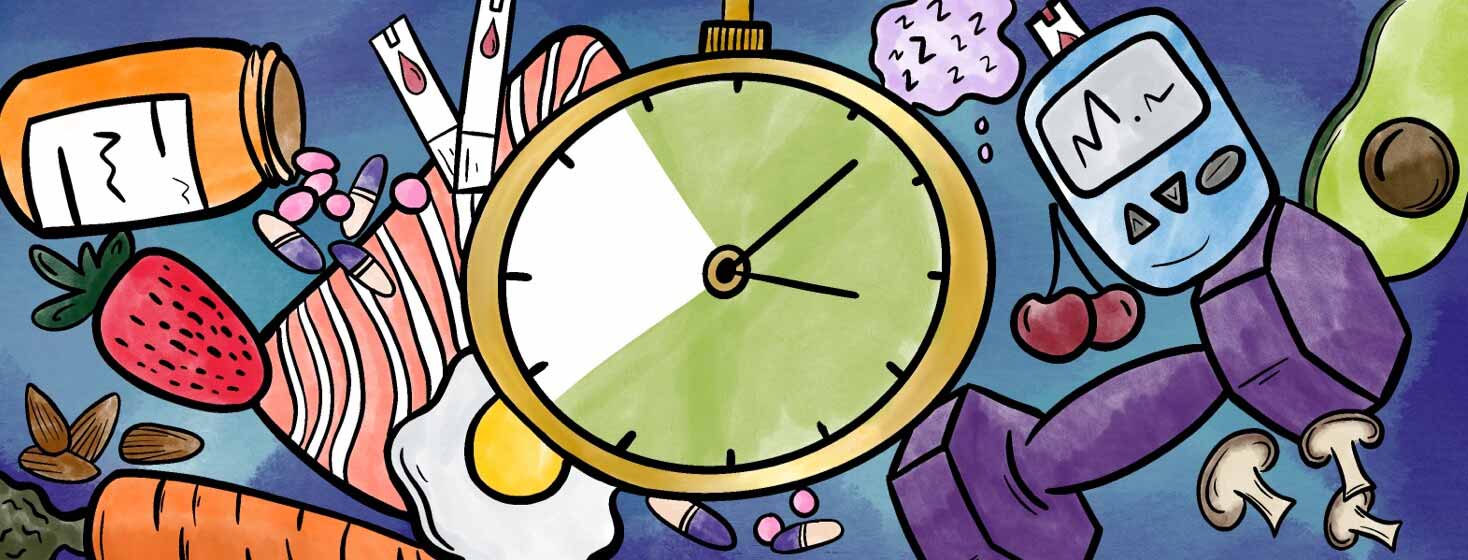Time In Range: The "New" A1C
Checking your blood sugar is part of diabetes management. We know when your individual blood sugar readings are in range, they will result in a hemoglobin A1C that will be in the American Diabetes Association’s target range of 7% or lower. Studies have shown a lower incidence of diabetes-related complications when we keep our blood sugar and A1C in-target.1
What is time in range?
Did you know that A1C may not give us the best assessment of our diabetes management though? The medical community has found a better tool that gives us a better way to assure that our blood sugar levels are staying in range most of the time. This new tool is called, time in range (TIR).
Time in range refers to the percentage of time your blood sugar is staying in the recommended ranges (70–180 mg/dL). The goal for time in range is written in the American Diabetes Association guidelines for Standards of Care for People with Diabetes. The recommendation suggests keeping our blood sugar in range for 70% or more of the time each day. Keeping your blood sugar in this 70% time in range will offer an A1C result of 7.0 %.2
As for low blood sugar, hypoglycemia, they suggest having a blood sugar of 70 mg/dL less than four percent of the time. Note that these recommendations are for the average person with type 1 or type 2 diabetes. People who are frail or older, people who have type 1 diabetes and are pregnant, and people with gestational diabetes will have different recommendations.2
Managing type 2 diabetes
Overall, managing diabetes whether it is type 1 or type 2 is the same. And management is highly affected by lifestyle choices. Key components of lifestyle management include healthy eating (monitoring carbohydrate, saturated fat, and trans-fat intake), being physically active for at least 30 minutes five days per week, keeping stress levels low, and taking your medications as prescribed by your doctor.
Time in range vs. A1C
Here is the great news about following the time in range guidelines: Each percent increase in time in range will significantly improve your A1C. For instance, for an increase in 10 percent or increase in 2.5 hours each day of being in range, your A1C will lower by .5 percent. Time in range gives us more precise information beyond an A1C test result. Remember that an A1C offers an average over a three-month period.2
Checking your blood sugar
Knowledge about your blood sugar is immensely powerful. If you wear a continuous glucose monitor (CGM), that system will keep track of your percentages of time in range daily. If you don’t have a CGM, use paired checking to gather your own data. Paired checking is described as checking before and after. For example, if you would like to find out how your blood sugar is trending at breakfast, check your blood sugar before eating breakfast and two hours after the start of eating breakfast.
The goal is to have your blood sugar at 180 mg/dl or below two hours after a meal. This strategy for checking blood sugar levels allows you to see how exercise and sleep, for instance, improves blood sugar levels. But before and after meals is especially valuable in adjusting your diet to reduce blood sugar spikes, and avoiding spikes is the best way to spend more time in range.

Join the conversation